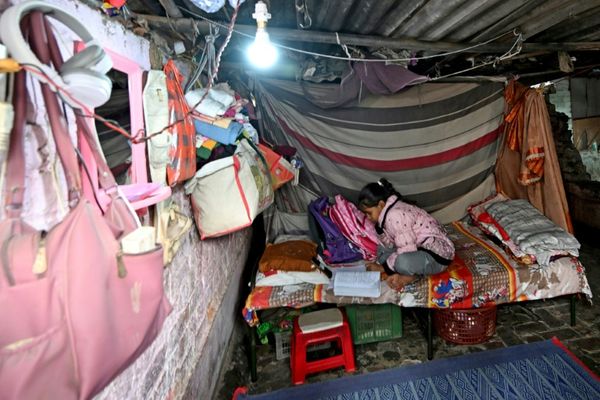
Jonathan Sri is a little irritated, and fair enough. The Queensland Greens had a triumph in the election, and Sri is co-responsible for the strategy that won them three seats across greater Brisbane. That amazed everyone — outside the Queensland Greens that is, who knew what was coming, although even they were probably a little surprised to knock off Ryan, a seat west of the river heading towards the bush.
Sri is irritated because southern experts are saying how it happened:
Many of these explanations (particularly from major party supporters) are hilariously simplistic, maybe because some people are trying to convince themselves that there’s an easy, straightforward way to counteract what’s happened. They sound more like wishful thinking than robust analysis …
Quite right, too. As a northerner (I’m writing this in Fitzroy, above the Yarra), I share Sri’s pain. Readers will have to take these notes on the Greens’ victory as an expression of the distinctive northern spirit, which knows not of your southern, Prahran-ish ways.
Without taking anything away from the Queensland Greens’ actual effort and the role of the floods and their response to them, the backdrop to their success in Brisbane was surely federal Labor’s lack of legitimacy in the Sunshine State. Everywhere else, the swing to Labor was strong enough on issues such as cost of living, integrity and climate change for seats to change hands. Why didn’t Labor get the lion’s share of that?
The answer is surely that Labor has weakened itself as the party of a left alternative by its unstinting identification with the coal and gas industry and its weakness on land clearing, and a host of other matters. That has had a dual effect. There’s a whole group who want to support Labor, as elsewhere, but just can’t. They have not only voted Green, but a whole tranche have volunteered for, or joined, the Greens.
The Queensland Greens have, so far as one can tell, a somewhat different class complexion and political positioning from the party in other states.
That appears to have fed into the different political strategies the Queensland Greens have been able to follow, further north of Fitzroy — mobilisation on a huge scale. That has involved not merely doorknocking but community activism on a grand scale. As noted in a report in Guardian Australia, the Brisbane floods served to bring climate change right to people’s doorstep. But the Queensland Greens program of food deliveries, local self-organisation, and even guerilla gardening was a response that turned a passive situation of victimhood into an active political process, in which the Greens became agents of self-organisation within the community and their “natural” representative outside it.
The leaders will put that down to a more radical sensibility and a series of political decisions, and so it is. Indeed, it is a continuity with the urban resistance of the Joh years and anarchist/DIY traditions that have been stronger in Brisbane than in other capital cities throughout the post-’60s era.
But it is also a product of having in the membership the sort of people willing to do this sort of campaigning — people who in other places might have been more comfortable and “naturally” drawn to the left of Labor. With Queensland Labor being King Coal and Lady Gas, that option is closed to them. It helps that Queensland federal Labor has put in a decades-long effort to be pathetic and dominated by sclerotic right-wing factionalism, with dullard members like Milton Dick (Oxley) — a member of “Parliamentary Friends of Coal Exports” — spending their time on internal politicking. Dick appears to have spent past months lobbying to get the gig of speaker, which may now go to an independent. Muppet.
Why haven’t Greens in other capital cities been able to replicate the Queensland Greens’ success (the magnificent Adam Bandt aside, of course)? In Tasmania, there is still a strong tradition of activism, but much of it, such as in the Tarkine, is being organised through the Bob Brown Foundation — and the party is the most economically right-wing state branch in the country, enamoured of the gig economy and wage “flexibility”. In NSW, well, I would refer you to volumes one to three of EH Carr’s A History of Soviet Russia covering the 1920s as a guide. Victoria? Ehhh… See below.
The Queensland Greens are now gung-ho to take the fight to the suburbs, arguing that anything is possible. Well, up to a point, Lord Max Chandler-Mather. There’s no doubt that Chandler-Mather’s 35% primary in Griffith, from non-incumbency, is extraordinary and involves high votes in the fairly suburban eastern side of the division. But the core Greens vote in all three seats has been from the centre of the city, where the network of educational institutions, supercharged during the Beattie years, is gathered.
Ryan is particularly interesting. Though it has had Queensland University in St Lucia for more than a century, its isolation by the river bend meant that it never became a core boho neighbourhood. But in 2006, the Eleanor Schonell Bridge connected West End and surrounds to St Lucia and Indooroopilly. What’s particular about the Schonell Bridge? It takes only buses, cyclists and pedestrians. It’s a Greens funnel, selectively decanting to the seat of Ryan those who don’t mind not driving or actively don’t want to. Now, with science academies and new campuses, Toowong and Indooroopilly are becoming centres of the knowledge class. You can pretty much forecast Greens booths by a cafe map of moodily named espresso joints.
So the Greens vote remains anchored by knowledge-class neighbourhoods. The knowledge class is about 25% of the population, about 40-50% in these areas, and the Greens get about 50-60% of its votes — you can then add about 20% of the remainder to judge by booth results. Labor’s lack of appeal ups the ratio. Divisions that are “purely” suburban may still remain out of reach for the Greens. There is sometimes a reluctance to surrender the universal stance — anyone can become a Green — and consider the party as the organic political expression of a knowledge-class worldview.
By contrast, the Greens standard yield in suburban seats is about 10%. The Queensland full-court press style (Brisbane is the only place, where, thanks to veteran activist Brian Laver anarchism has been spread by the medium of tennis) might take them to a 20% first preference. That would be an impressive result, but still not enough. And it may be a lot to get a little — 15% or so — spreading resources too thin. The next target would presumably be Bonner, whose 16% Greens vote is largely drawn from the areas around Griffith University in its south-west corner. Gettable, but tougher than the three so far (going on cafes again).
The Queenslanders argue that their intense, mass-doorknocking style works because once Greens can speak face to face with people they can talk through the media fog and talk people around. Now that’s unquestionably true, though there has to be the type of person there who can hear what’s being said. With Labor in power, Labor seats will once again be up for being taken again, as heartbreak, disappointment and betrayal set in, quite possibly by next Wednesday. Quite aside from sui generis Richmond in NSW, where the redoubtable Mandy Nolan came close, and the standard knowledge-class/teal liberal seat of Macnamara, the next two targets are surely Cooper (formerly Batman) and Wills in Melbourne’s inner north.
They can be got, but only if every residence in both divisions is doorknocked, starting in about six months. In terms of grassroots social campaigns, the Victorian Greens can be the opposite of the Queensland Greens: it has proved difficult in urban activist struggles to draw them into grassroots campaigns. The personnel is more knowledge-class bougie; council success has drawn them into electoralism; some (many?) are green neoliberals.
In that respect, it’s no exaggeration to say that Cooper and Wills will be won or lost for the Greens on selection of candidate. They need a candidate who can be selected early, and who has the will and the possibility to work solidly for two and a half years, has an activist support network, can make campaigns happen, can become a de facto advocate for the electorate and, above all, can commit to the long slog of doorknocking, week after week after week…
No celebrity candidate is a substitute for that commitment. And with Ged Kearney and Peter Khalil jammed up by Labor’s compromises, and with further demographic shift, the 9% Labor-to-Green swing required is well within reach. The Queensland Greens have shown what’s possible; we are in their debt. Though it probably doesn’t feel this way when you’re sitting on your roof, the tide taken at the flood leads on to fortune.







